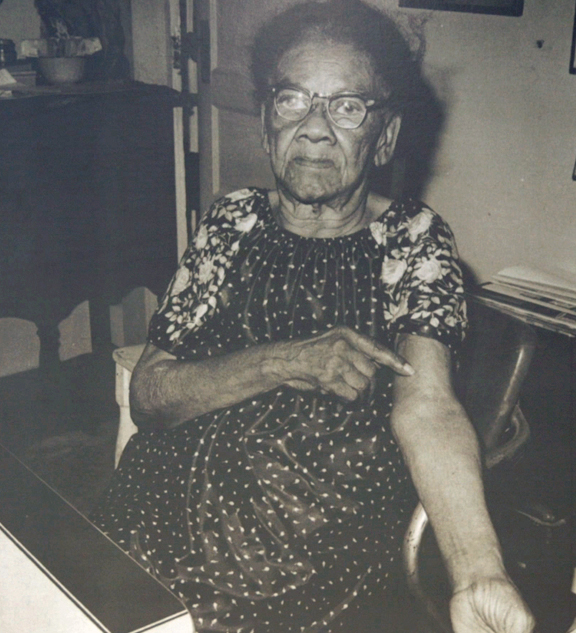“We must challenge, skillfully, but resolutely, every sign of restriction or limitation to our full American citizenship…we must seek every opportunity to place the burden of responsibility upon him who denies it.”
Mary McLeod Bethune, founder of Bethune-Cookman University, Daytona Beach, Florida
Histories and Legacies of Racial Violence in Florida
Early Florida
Men and women of African descent inhabited St. Augustine, the nation’s oldest city, soon after its founding by Spanish settlers in 1528. In later decades of the city there would be 625 White inhabitants and 56 African slaves. As the years passed, people of African descent, seeking freedom and autonomy, would inhabit the first all-black community in North America, Fort Mose, two miles north of St. Augustine.
In 1704, as the need to build and defend La Florida increased, the Spanish opened the territory to fugitive slaves from British plantations to the North. Runaways were an ongoing problem in Georgia and other southern states as many Black people rushed across the Florida border to escape the brutality of slavery.
In the western part of Florida, many Black people lived in community with Seminoles in relative freedom. Protected by Spanish law, they were awarded the right to own land. However, by 1811, raids by intruders from surrounding territories increased. The properties and communities of Blacks and Indians were destroyed.
When Florida became a territory of the U.S. in 1821, slave owners from other parts of the south migrated into the state, bringing enslaved people with them. A rapidly changing Florida became the 27th state of the U.S. in 1845. By 1860, enslaved people were 43 percent of the population. Florida was among the first states to secede from the Union in 1861, primarily to protect the rights of slaveowners to continue enslaving human beings. After the Civil War and the abolition of slavery, Black men and women enthusiastically embraced freedom through marriage and family; engagement with various forms of employment; through the establishment of social and cultural institutions and—in some cases– by establishing autonomous communities. African Americans also served as public officials during the Reconstruction era. In Florida, over 1,000 Black men held public offices across the state during and after Reconstruction.
Jim Crow
The Jim Crow era was a time of very stark, brutal white supremacist beliefs and practices. Unhindered by any laws or policies that would protect the liberties of Black people, Whites enforced racial segregation in public facilities and institutions, including schools, sites of commerce, and on public transportation. From the Reconstruction era until the mid-twentieth century, Florida was one of the most violent states in the U.S. with lynchings and racial terror occurring in many counties across the state. In a 1995 sociological study of lynchings in ten southern states, Tolnay and Beck concluded that Black people were more likely to be lynched in Florida than any other southern state during the period 1880-1930.

The Civil Rights Movement
While violence as a tool of white supremacy and racist intimidation is deeply embedded and ubiquitous in Florida’s history, resistance to anti-Black hatred is also a very significant component of Florida’s rich history. Restrictions on Black mobility, denial of access to adequate educational opportunities and the perpetual threat of violence did not stifle the hopes, dreams and ambitions of Black people throughout the south. In the 1950s and 60s, Black youth across the state protested publicly against racial oppression in Florida. In May of 1956 two women students from Florida A&M University sat down in the “Whites Only” section of a city bus in Tallahassee. College students in other Florida cities held sit-ins at downtown lunch counters and in 1964, St. Augustine, the nation’s oldest city, became a major site of civil rights activism. Although arrested, jailed, and threated with greater violence, many courageous men and women worked together in civil rights organizations to bring about social change.
The Ongoing Liberation Struggle
The project in Florida addresses the intersection of race, history, memory, reconciliation and landscape. Capturing the lived experiences of Black Floridians during the Jim Crow era and documenting contemporary responses to racial violence during that era has been the major focus of the interdisciplinary team at the University of South Florida. The graduate students who have conducted the research bring knowledge from the disciplines of Anthropology, Library and Information Sciences, Women and Gender Studies and Political Science. Framing their research historically and ethnographically, the research team has employed multiple methods in order to address the major questions raised by this project.
The research in Florida examines cities and towns in six counties, including Orange, Pinellas, Polk, Hillsborough, Levy and Brevard. In each of these counties, team members endeavor to identify communities known as “sundown towns;” they document significant spaces and places in which instances of racial terror have occurred; and they record and analyze contemporary efforts to publicly memorialize histories of terror in these communities. Finally, analyses of the complex intersection of memory and reconciliation are critical aspects of this project. This intersection has profound implications for the researchers and, most importantly, for residents of each Florida community affected by racial violence.
Florida Counties
Florida County pages will be added soon.